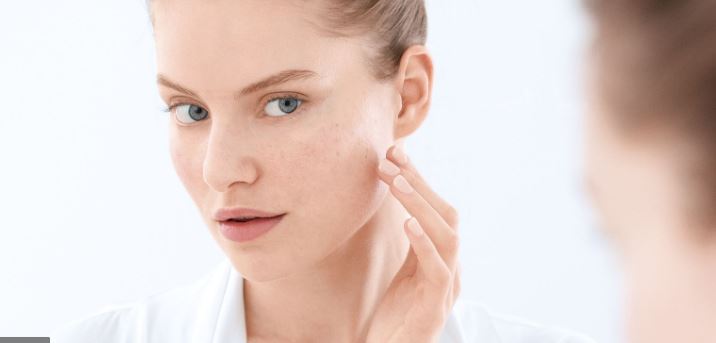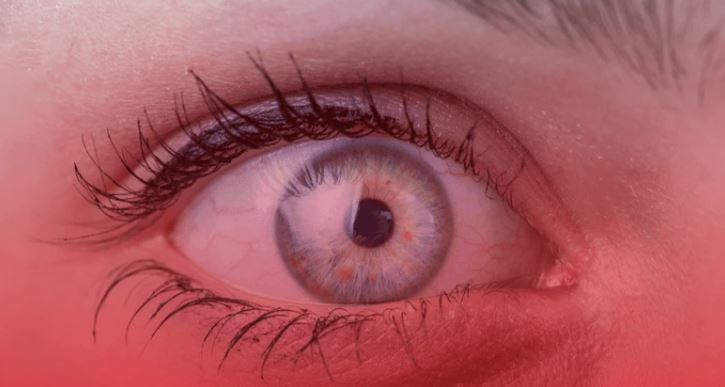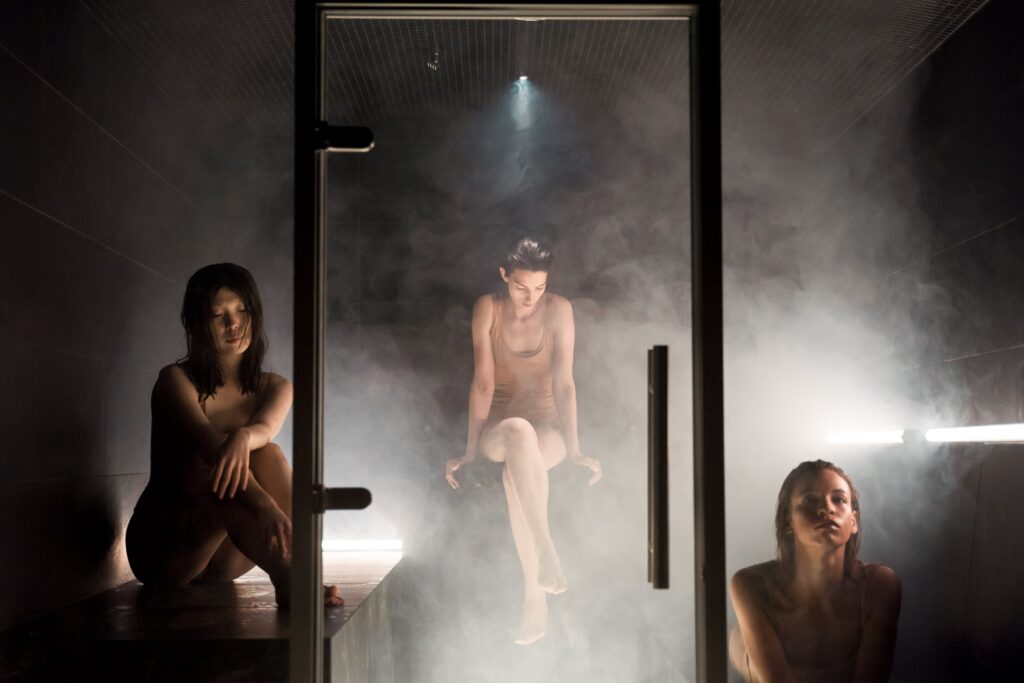People have never lived in a world without being exposed to some form of infrared radiation, whether it is from the sun, fire, electric lights, or light-emitting diodes (LEDs) (IR). It can brown the bread you're eating, switch channels on the television, and bake the paint on a brand-new car. On the other hand, infrared light cannot be seen, and it can only be transmitted in a linear fashion.
Every second of every day, humans are bombarded with light rays from all directions. There are two types of light: the visible light that comes from sources such as the sun and light bulbs powered by electricity, and the ultraviolet (UV) light that causes our skin to become tanned, red, and finally wrinkled. There is also the light that we are not aware of, such as the radio waves that reflect off of us and the gamma rays that pass right through us. Because of the pervasiveness, variety, and power of light, a wide variety of medical professionals, including neurologists, dermatologists, and wellness experts, are attempting to harness light waves in order to improve and heal the human body. And despite the fact that it has a very outlandish tone to it, it turns out that there is more to light than meets the eye.
Dermatology has been at the forefront of the movement to employ light therapeutically, utilizing red, blue, and even UV light itself to treat a variety of skin conditions, including acne, eczema, and precancerous skin cells. In part, this is due to the obvious impact that UV light has on the skin. Anesthesiologists have just lately begun to investigate whether exposure to green light can be used to treat the excruciating pain caused by migraines and fibromyalgia. Advocates believe that infrared light can treat a wide variety of conditions, ranging from arthritis to Alzheimer's disease. This potential makes infrared light appear to have more therapeutic promise than any other wavelength.
When you consider light to be a sort of energy, the idea that it may have all of these impacts on the body starts to make more sense, even though it may initially appear to be implausible. This energy has the potential to change the behavior of the electrons found in atoms, which are found in pretty much everything. What humans perceive to be visible light is actually only a small section of what is known as the electromagnetic spectrum, which is made up of various wavelengths of photons that transport energy. This spectrum extends from radio waves, which have extremely long wavelengths but low energies, all the way up to gamma rays, which have the shortest wavelengths but the highest energies. It also includes X-rays and microwaves in its scope.
FAQs About Sauna
Although it is tempting to jump in the sauna right after a workout, it is important to avoid workout clothes or anything made with synthetic material. Clothing made with spandex or other plastic can melt at high temperature and should be avoided in a sauna.
For some, the cold immersion after a hot sauna can improve blood flow. Indeed, cold shower enthusiasts maintain that a cold shower is rejuvenating, simply because of increased blood flow. The hot/cold experience elevates heart rate, adrenaline, and the release of endorphins.
Improves heart function: A study has shown that regular saunas may improve heart function in people with heart failure. Another study has shown that using a sauna 4-7 times a week can significantly lower the risk of sudden cardiac death and other heart diseases.
While bathing in the sauna, it is important to remember to drink water. Not coffee, not carbonated soft drinks, but the simplest water.
If you want to get the best out of your sauna time for your sleep therapy needs, start by going to the sauna before bed. Ideally, step in for a sauna session 15 minutes prior to bedtime. This will raise your body temperature to the right degree range for promoting muscle relaxation and sleep-inducing response.
Infrared Therapy: What Is It and How Does It Work?
Infrared light therapy is one of the numerous experimental treatments for acute and chronic pain that is now being tested in human clinical trials. The treatment includes focusing certain light wavelengths on injured tissues to speed up the body's natural healing process.
Infrared light, in contrast to ultraviolet light, which can damage biological tissues and cells, actually stimulates these processes. Infrared light has also been demonstrated to improve oxygen-rich blood flow throughout the body, which aids in the speedy recovery of injured deep tissues and the alleviation of associated pain.
Pain relief
Patients suffering from illnesses such as rheumatoid arthritis may find that using an infrared sauna is at the very least beneficial in alleviating the severe discomfort that they experience. In one study, a total of eight sessions in an infrared sauna were used to treat individuals suffering from rheumatoid arthritis, ankylosing spondylitis, and both conditions over the course of a period of four weeks. Comfort was reported primarily following sessions, and there were no statistically significant increases in disease activity despite the "statistically significant" improvements in pain and stiffness.
Even while FIR technology and the treatment of chronic pain have been the subject of research, there is not much proof that it is effective. Patients in the sauna test group were more likely to have better sleep and/or returned to work after two years of therapy. In addition, patients in this group showed improvement in pain behavior and anger scores. The study included 46 patients who suffered from chronic pain.
The deep penetration of infrared heat may help athletes recover from strenuous workouts more quickly, according to the findings of a pilot study that involved ten healthy men who were also physically active. This study looked at the effects of heat on pain relief after strength or endurance training.
Infrared light has the ability to penetrate deeper into the skin than other types of light, giving it a considerably broader reach in terms of its capacity to alleviate pain. This is one of the properties that give it its name. This non-invasive, all-natural, and painless procedure can, in point of fact, deliver a wide variety of benefits to one's health, all without causing any harm to the skin through exposure to UV rays.
The warmth that a person experiences when they are exposed to infrared light from the sun. Every day, infrared heat is naturally radiated from the surface of the skin. Infrared light has been found to have significant health advantages, including the alleviation of pain and a reduction in inflammation.
Invisible
Because the term "infrared" literally translates to "below the red," it follows that the frequencies of infrared light are lower than those of visible red light. This is analogous to low sound vibrations, the difference being that you feel them rather than hear them. Because infrared light is invisible to the human eye, the majority of the light emitted by an incandescent bulb and a candle is unusable. It's possible that you'll grab a pan off the burner without thinking twice about it, and then you'll end up getting burned. Even while it would make things a lot simpler if you could see infrared, your eyes are not designed to do so.
Line of Sight
Since it is a type of light, infrared travels through space in a linear fashion. If you have ever tried to use a remote control in a room that also contained people, pets, or furniture, then you already know that if anything gets in the way of you and the television, the remote control won't function. For this type of transmission, which scientists refer to as "line-of-sight transmission," it is necessary to be able to see the target in order to be able to deliver infrared light to it. You will not be successful in finding it if it is behind a corner, behind a large dog, or beyond the horizon.
Heating
You might remember learning in elementary school science that there are three ways to transfer heat: conduction, convection, and radiation. Radiation travels at the speed of light, making it the quickest of these three different types of particles. Heating is made much easier using infrared radiation because it eliminates the requirement for the object being heated and the one that it is intended to heat to come into close contact with one another. Turning the power up or down is an easy way to exercise control over the radiant heat.
Production
One of its primary advantages is the simplicity with which it may be produced and controlled. Either fire or a light bulb can be used to create infrared. While you are sitting here and reading this, your body is producing IR. The worldwide communications network that is the backbone of the Internet is mostly reliant on infrared light, which is generated by relatively low-cost electrical gadgets.
How Safe Is Infrared Therapy?
Physical and Mental Benefits of Cardiovascular Fitness
Improvements in cardiovascular health are among the most notable health benefits associated with infrared therapy. The exposure of tissue to infrared light increases the production of nitric oxide, a vital signalling molecule necessary for the health of blood vessels. This chemical helps relax the arteries, which lowers the risk of cardiovascular disease by preventing blood from clotting and clumping in the vessels. In addition to these advantages, it acts as an antioxidant, lowering oxidative stress and promoting normal blood pressure.
To improve oxygen and nutrition delivery to injured tissues, the body must produce nitric oxide, which plays a vital role in the healing process. Hence, infrared light reduces inflammation and pain because it speeds wound healing and encourages the regeneration of injured tissues.
Pain and Inflammation
The use of infrared therapy as a treatment for pain and inflammation is both effective and safe. It is able to go all the way through the layers of skin and reach the underlying muscles and bones. As a result of infrared therapy's ability to stimulate and improve blood circulation in the skin and other regions of the body, it can provide nutrients and oxygen to injured tissues, which in turn promotes the healing process. It reduces pain, calms inflammation, and protects the body from the damaging effects of oxidative stress.
Heart health
Infrared radiation (FIR) may be able to normalize blood pressure and treat congestive heart failure, according to an assessment of published information regarding infrared saunas and the health of the heart; however, this evidence is limited at best and modest at most. At least three pieces of research published in peer-reviewed journals back the use of infrared saunas for people who have coronary risk factors like hypertension, obesity, and smoking. On the other hand, there were issues with some of the reporting methods used by the authors of the study to give the results more validity, and the duration of the studies was not long enough.
Having said that, there is one extensive study on the relationship between sauna use and heart health, and it's a good one. The study was conducted in Finland and involved 2,300 men in the middle years of their lives.
Researchers looked at mortality rates over a period of twenty years and discovered that males who went to saunas more regularly had a lower overall mortality rate, notably from cardiovascular disease and stroke. There are approximate as many saunas in Finland as there are television sets, and the Finns believe their saunas to be "special" (despite the fact that they are not infrared). Researchers have noted that saunas may have an effect on cardiovascular conditioning as they boost the heart rate, similar to how exercise does. However, the majority of Finnish people only go to the sauna once per week. Only half of men and one-third of women meet the exercise requirements. But even the authors of this study indicated that other research is necessary, and we don't see how they could have monitored all the other lifestyle and external conditions that could have led to these results. Even the authors of this study noted that additional research should be done.
Infrared saunas were discovered to improve possible peripheral blood circulation as well as arterial blood flows, in addition to increasing capillary dilatation, as part of the findings of another comprehensive assessment of studies on the health of the heart. Some of the claims may be valid due to the fact that saunas may simply reduce oxidative stress; however, before we can fully weigh in on the matter, we would like to see more human research and larger sample sizes.
Muscular Injuries
Infrared therapy helps to increase the function of the mitochondria found inside cells, which in turn stimulates the production of new muscle cells and the repair of damaged tissue. In other words, the mending process following muscle damage can be sped up by the use of infrared light.

Detoxification
Saunas are one method that can be used to administer infrared treatment. Detoxifications are essential since they have the potential to improve one's immune system. Detoxification, on the other hand, helps biological systems run more normally, which in turn improves the digestion of food. The core temperature of the body rises as a result of exposure to infrared light, which promotes detox at the cellular level.
Anti-aging
Many proprietors of infrared saunas advertise the "natural anti-aging" benefits of their saunas as a way to attract more consumers to their establishments. But is it possible that a session in the sauna could actually turn back the clock on our aging?
Researchers investigated the effects of infrared radiation on the formation of collagen and elastin in dermal fibroblasts in one of their studies. They also investigated how the technology might influence photo-aged facial skin lesions. Collagen and elastin production was discovered to have risen after daily FIR treatments were administered to twenty individuals for a period of six months. These patients presented with facial wrinkles ranging from mild to severe severity and hyperpigmented lesions. The majority of patients felt that their skin's texture had improved, and roughly one-quarter of them believed that their skin color tone had also improved, despite the fact that the researchers did not see any changes in the hyper-pigmented lesions. 19 Although infrared saunas may help minimize the appearance of wrinkles, the outcomes may vary depending on the individual using the sauna.
It is important to be aware that certain forms of near-infrared radiation (NIR) might have negative effects on the skin. Prolonged exposure to heat caused by NIR can result in the development of additional wrinkles. However, near-infrared radiation (NIR) can also be utilized as a form of light therapy, the specifics of which are determined by the irradiance level.
Potential Cancer Cure
The use of infrared radiation as a treatment for cancer is currently being researched. According to studies, nanoparticles undergo substantial activation when they are subjected to infrared light; as a result, the particles become extremely hazardous to the cancer cells that are in the surrounding area. Photoimmunotherapy is one form of treatment that can be utilized; it involves the utilization of a conjugated antibody-photo absorber complex that attaches to cancer cells.
Researchers have shown that infrared light can travel through an inch and a half of tissue in the body, heating up the cells and tissues it encounters along the way. This has led to the proliferation of infrared saunas, which have been increasingly fashionable over the past several years thanks to the celebrity endorsements of the Pseudoscience Squad, which includes Gwyneth Paltrow, Tom Brady, Joe Rogan, Jack Dorsey, and the Kardashian sisters.
Manufacturers and advocates of infrared saunas make the time-honored WellnessTM claim that these types of saunas "detoxify" the body. When they say "detoxify," they mean that these saunas make it possible for you to sweat in a particular way that rids your cells of heavy metals, calories, and signs of aging. In case it's not obvious, perspiration is the same no matter how it forms, and it does not play a role in the elimination of toxins from the body (the liver and kidneys do). When perspiration evaporates off of your skin, it helps to cool you off and serve its intended purpose.
Infrared saunas focus on heating the body from the inside out, as opposed to regular saunas, which raise the temperature of the room itself. The same type of infrared lighting technology may be found in both the incubators used for premature babies and the heat lamps used in cafeterias to keep French fries warm. Infrared saunas reach a maximum temperature of 120 degrees Fahrenheit, whereas traditional saunas reach a maximum temperature of 200 degrees Fahrenheit. This is due to the fact that infrared saunas heat you from the inside out, rather than from the outside in. This suggests that you may be able to remain in an infrared sauna for a longer period of time than you could in a conventional sauna. Aside from that, there is really no difference between the 2, and it seems to be the general view that any health effects provided by infrared saunas likely derive from the heat rather than the light itself. Other than that, there is no difference between the two.
This is not to imply that saunas, regardless of whether they are infrared or not, do not have any positive effects. There is some evidence, notably from research conducted in Scandinavia and East Asia, that they may improve flow and cardiovascular function, reduce pain, and speed up muscle recovery. These benefits may come as a result of their ability to speed up muscle repair. There is also a correlation between frequent sauna use and a longer lifetime; however, it is impossible to determine whether this is attributable to the sauna itself or to the practice of emphasizing relaxation and well-being.
According to Michael Hamblin, a principal investigator at the Wellman Center for Photomedicine at Massachusetts General Hospital, "the mid-infrared light in the sauna is really used more for health, wellness, athletic recovery, and possibly increased athletic performance." "The sauna is really used more for health, wellness, athletic recovery, and possibly increased athletic performance." There is some evidence to suggest that it is helpful in treating a wide variety of systemic diseases.
It is important to take note that Hamblin referred to mid-infrared light, which is characterized by longer wavelengths and is the type of light that is utilized in infrared saunas. This is in contrast to near-infrared light, which possesses shorter wavelengths and is employed in infrared helmets, which are essentially a helmet or headsets with miniature infrared lights attached on the inside. Infrared helmets are used in some military applications.
Dangers of Infrared Radiation
Due to the fact that infrared radiation may only go about 4 centimeters into the human body, the greatest dangers associated with exposure to infrared radiation are to the epidermis and the eyes.
In addition, safety tests on a broad scale should be done to assess the long-term consequences of exposure to infrared radiation, as well as the impacts of different light wavelengths and "doses."
As a result, the following list of potential negative consequences of infrared radiation is not meant to be an exhaustive compilation of all of those impacts.

Skin Damage
It is estimated that around 65% of the infrared radiation that strikes a human body makes it all the way through to the dermis before being absorbed. One potential cause for concern at this point is the acceleration of photoaging (aging due to light).
One study indicated that greater exposure to infrared light boosted MMP-1 production, despite the fact that ultraviolet rays are the primary agents that cause photoaging. It is possible that MMP-1 is a contributor to photoaging, which leads to a reduction in the formation of collagen and elastin in the skin.
The rise in the surface temperature of the skin may also have unintended consequences. The production of reactive oxygen species can be brought about by a rise in temperature brought about by an induced heat shock, and these species have the potential to cause damage over time.
Tattooed skin is more susceptible to damage from infrared radiation. Inflammation of the skin was caused by far infrared light in one male (pseudolymphoma)
Numerous studies have shown that exposure to near-infrared light induces photoaging of the skin in a manner that is analogous to that which is brought on by exposure to UV light. The process of photoaging results in the appearance of deep wrinkles, uneven pigmentation of the skin, a loss of skin suppleness, and a disruption of the skin barrier functions (Yaar, 2006).
It was discovered beginning with Kligman's study in 1982 that exposure to near-infrared light alone induced skin damage and skin aging in albino guinea pigs in a manner that was comparable to that caused by UV light.
According to research published in 2005 by Kim et al., near-infrared produced wrinkles in hairless mice. Since then, it has been established and validated that exposure to near-infrared light (IR-A) in human dermal fibroblasts results in the generation of reactive oxygen species (ROS), which is a contributing factor in the aging of the skin. In the dermis layer of the skin are cells known as fibroblasts, which are responsible for the production of collagen and the extracellular matrix. Collagen in its natural state offers skin both its structure and a more youthful appearance. In addition to the damage that they inflict on their own, these reactive oxygen species (ROS) also promote an increase in the gene expression of matrix metalloproteinase-1 (MMP-1) in the skin. Because the MMP-1 enzyme dissolves type-1 and type-3 collagen as well as elastic fibers, this is a significant contributor to the aging of the skin.
When acquiring an infrared sauna with the intention of improving and restoring one's health, an individual who does not want their skin to age prematurely should avoid using the device. This is a concern that is only present in near-infrared saunas and does not exist in far-infrared saunas.

Overheating and Dehydration
According to the explanation provided by Andrew Weil, a physician, the greatest danger associated with using a dry or steam sauna for an extended period of time is overexertion. Overheating can produce dizziness as well as dehydration, and dehydration can lead to a shortage of electrolytes in the body. Because their sweat glands become less functional with age, elderly persons are more likely to become overheated. According to Sauna Talk, circulatory issues can also be a problem for people who use saunas. As a result of the fact that a child's body temperature can rise more rapidly than an adult's, it is strongly recommended that parents seek the advice of a pediatrician before letting their children use saunas.
Consuming alcohol raises the likelihood of being overheated. In addition, individuals who are currently under the influence of beta-blockers, antihistamines, barbiturates, or diuretics should exercise extreme caution before entering an infrared sauna. These medications have the potential to inhibit the body's capacity to sweat, which can lead to dehydration. People who suffer from certain health conditions may not be able to comfortably tolerate the high temperatures of an infrared sauna. A number of diseases fall into this category, including Parkinson's disease, multiple sclerosis, diabetic neuropathy, and adrenal suppression.
Worsening Eczema
A study that was published in the "American Journal of Medicine" found that patients who have eczema (atopic dermatitis) may have an increase in itching after using a sauna. Another study that was conducted on children and published in the "European Journal of Pediatrics" in December 1989 analyzed children who regularly participated in saunas and discovered that fifty percent of the children who had atopic dermatitis suffered worse symptoms while in the sauna.
Silicone Implants
One potential risk that is more closely related to using an infrared sauna as opposed to a traditional steam room is that any silicone implants could be damaged. According to the information provided by Sauna Talk, silicone is capable of absorbing infrared heat. Before using an infrared sauna, people who have silicone implants should make an appointment with their primary care physician.

Eye Damage
Infrared rays are picked up by the lens of the eye, which has a high level of sensitivity to them. Exposure to high sources of power over a prolonged period of time may contribute to the development of cataracts.
Infrared radiation has the potential to cause damage to essential proteins, which can disrupt both the lens's regular functioning and the flow of ions and enzymes through it. This might cause the lens to become less transparent.
Cataracts, a Risk from Near-Infrared Saunas
Cataracts have been linked to exposure to near-infrared light, especially if it is strong or present for a long time. The lens of the eye gradually becomes cloudy as we age, a condition known as cataracts. They account for the vast majority of cases of blindness over the world. Extensive research done in 1984 discovered that being exposed to near-infrared light for extended periods of time increases the likelihood of developing cataracts. The near-infrared radiation exposure of those who work with iron, steel, and glass is significant. By age 60, just 12% of controls showed signs of cataract formation, but 32% of ironworkers did. By the time they were 70 years old, 16 percent of glassworkers and 1 percent of controls had cataracts that required surgery.
Animal studies have since provided conclusive proof that near-infrared light exposure leads to cataract formation and provided insights into the mechanisms at play. Crystallin is a water-soluble protein that plays a crucial role in keeping the lens transparent. Cataracts, which manifest as a clouding of the lens, are linked to a degradation of crystallin and a decrease in its formation. Research released in 2011 found that near-infrared light reduces crystallin levels and alters the protein's structure to make it less soluble. Researchers in 2013 found that when the cornea and lens were exposed to near-infrared light, levels of matrix metalloproteinases (an enzyme that degrades structural proteins) increased. This is one of the methods by which near-infrared light can damage human skin (Dadoukis, 2013). Scientists' studies have shown that only wavelengths shorter than 3000 nanometers can induce this kind of eye injury (near and mid-infrared). Weakest are the shorter-range wavelengths, between 780um and 1400nm (near infrared). No evidence exists to suggest that exposure to light with a wavelength greater than 3000 nm (far infrared) is damaging to the human eye.
Occupational limits for near-infrared exposure are set by the International Commission for the Non-ionizing Radiation Protection (ICNIRP). Safe levels of long-term exposure have not been determined, and there is a dearth of available data. Animal studies, however, have revealed the acute exposure limits that result in rapid cataract development. "cataract has been epidemiologically connected with chronic intermittent exposure at low irradiance," as is the case in a near-infrared sauna, according to the International Commission on Non-Ionizing Radiation Protection (ICNIRP).
Caveats
Few infrared clinical trials involving humans have been conducted to yet. On top of that, the bulk of the conducted studies on humans are not of very high quality (not double-blind or having a large sample size).
See a doctor first if you're thinking about trying an infrared sauna.
Avoiding infrared light is recommended for pregnant women, children, the elderly, and people with impaired immune systems due to the lack of trustworthy safety data and the potential hazards connected with overheating.
Every day, people are subjected to the warming effects of the sun's infrared radiation. Although infrared saunas are gaining in popularity, some medical experts worry that they may have harmful impacts on their users. Damage from infrared light can take the form of heat or thermal shock, depending on the wavelength of the rays involved. Damage from heat can occur even if there is no sensation of pain. Furthermore, infrared therapy should never be used on pregnant women, anyone with cardiovascular issues, or anybody else who is ill.
Moreover, infrared therapy is not recommended as a sole treatment for chronic diseases, since this would negate the necessity for the administration of prescription medications and other therapeutic modalities. Yet, additional study is required despite infrared therapy's promising health benefits. Hence, at this time, it should be considered an adjunct to medical treatment, and all other regimens should be continued as they have been prescribed.
Potential Risks of Near-Infrared Sauna Use: Oxidative Stress and Reactive Oxygen Species
The elimination of reactive oxygen species (ROS) such superoxide (02-) and reactive oxygen species (O2-) is essential for good health. This means they deplete some of your body's antioxidants, leaving you vulnerable to the harmful effects of other contaminants.
When human fibroblasts were exposed to near-infrared light, the mitochondria produced superoxide, as reported by Schroeder in 2007. Because of this, MMP-1 was eventually created. In addition, it increases the proportion of oxidised glutathione. Oxidized glutathione is the state that glutathione adopts when it has been "used up." Schroeder (2008) found that the skin's antioxidant levels dropped after being exposed to near-infrared light. Catalase and superoxide dismutase, enzymes that protect against reactive oxygen species, were shown to be significantly reduced after near-infrared light exposure, as found by Costa (2015). (ROS). Hence, it has to be noted that IRA irradiation near-infrared) is applied only in cases of lesions and injuries, i.e. infrequently," wrote Darvin et al. in 2010. The major point they make is that free radicals are produced when exposed to near-infrared light for an extended period of time, like in a near-infrared sauna.
Cancer Risks Associated with Near-Infrared Saunas
Near-infrared (IR-A) light, which has a shorter wavelength than UVB light, has been found to inhibit apoptosis in cultured cells (Jantschitsch 2009). Apoptosis prevents genetically damaged cells from dividing and developing into malignant tumours. Calles's (2010) research shows that 599 genes can have their expression altered by exposure to near-infrared light. Eleven of those genes had some connection to apoptosis. Because they also detected less DNA repair, the results of Costa's 2015 study showing that decreased apoptosis is dangerous are all the more worrisome. That's because after 48 hours, the amount of GADD45a protein in the body drops by 57.2%, and after 72 hours, it drops by 34.6%.
According to Kimeswenger (2016), NIR radiation has a significant effect on human melanocytes. Melanocytes are the cells responsible for producing melanin, the pigment that shields skin from UV radiation. Melanocytes are the cancerous skin cells of genesis for the deadly melanoma kind. Near-infrared light alone did not affect apoptosis in this study 24 hours after exposure, but when paired with UVB light, it significantly reduced apoptosis. The effects of the near-infrared light on DNA repair were then studied (since DNA damage is the major trigger for ultraviolet radiation-induced apoptosis). They looked at the effects of the near-infrared light on DNA repair at 6, 24, and 48 hours and found no change. They showed that exposure to near-infrared light altered the expression of a plethora of proteins involved in programmed cell death. Research concluded that "because IRA (near-infrared) does not modify the repair of DNA-damaged melanocytes, the enhanced survival of severely DNA-damaged melanocytes can accelerate the accumulation of UVB-induced mutations, malignant transformation, and ultimately melanomagenesis." This suggests that near-infrared light may play a role in the carcinogenic effects of ultraviolet B radiation. As you might imagine, the danger posed by near-infrared saunas is very real and causes considerable cause for alarm.
Infrared therapy is a pain-relieving, non-invasive therapeutic option for a wide range of medical conditions. This strategy seems to be both risk-free and successful, and it doesn't require the use of any medications. It also aids the body in repairing damaged areas more quickly.
Injuries can be treated to reduce discomfort, stop swelling, and restore normal function to the affected area. Joint pain, inflammation in the joints, muscular pain, nerve pain, spinal cord injuries, and sports injuries are only some of the conditions that can be helped by infrared therapy.
Treatment with infrared therapy involves the use of light with infrared wavelengths to alleviate inflammation and heal damaged or diseased tissues. It has been hypothesised that infrared light's ability to heat tissue and hence boost circulation and decrease inflammation has a positive effect on wound healing and other processes. If you believe the proponents of this hypothesis, this is what happens when you heat up the tissues.
At this moment, infrared light seems to be particularly effective in treating inflammation, psoriasis, and diabetic ulcers. For many of its more prevalent uses, infrared therapy is not backed by sufficient research.
Conclusion
Infrared light has more therapeutic potential than any other wavelength, and is being harnessed by medical professionals to improve and heal the human body. Infrared light therapy is an experimental treatment for acute and chronic pain that focuses certain light wavelengths on injured tissues to speed up the body's natural healing process. Infrared light has the ability to penetrate deeper into the skin than other types of light, allowing it to alleviate pain and reduce inflammation. Infrared therapy is effective and safe for cardiovascular health, pain and inflammation, and heart health. It reduces pain, calms inflammation, and protects the body from the damaging effects of oxidative stress.
Infrared radiation may be able to normalize blood pressure and treat congestive heart failure, but evidence is limited and modest. Additional research is needed. Infrared therapy can help speed up the mending process following muscle damage and promote detoxification, anti-aging, and potential cancer cure. Instrared saunas claim to "detoxify" the body, but perspiration is the same no matter how it forms and does not eliminate toxins. Infrared saunas focus on heating the body from the inside out, rather than from the outside in, and may improve flow and cardiovascular function, reduce pain, and speed up muscle recovery.
Infrared radiation can cause skin damage due to acceleration of photoaging, reduction in collagen and elastin formation, and production of reactive oxygen species. Safety tests should be done to assess long-term consequences. Near-infrared light exposure to human dermal fibroblasts results in the generation of reactive oxygen species (ROS), which is a contributing factor to the aging of the skin. Risks from near-infrared saunas include overheating, worsening eczema, eye damage, and potential damage to silicone implants. Near-infrared light exposure increases the likelihood of developing cataracts, which are linked to a degradation of crystallin and a decrease in its formation.
Occupational limits for near-infrared exposure have not been determined, but animal studies have revealed the acute exposure limits that result in rapid cataract development. Infrared saunas should be avoided for pregnant women, children, the elderly, and people with impaired immune systems due to lack of trustworthy safety data and potential hazards. Near-infrared light has been found to inhibit apoptosis in cultured cells, leading to decreased GADD45a protein levels and increased ROS. Infrared therapy is a pain-relieving, non-invasive therapeutic option for a wide range of medical conditions that can help reduce discomfort, stop swelling, and restore normal function.
Content Summary
- Advocates believe that infrared light can treat a wide variety of conditions, ranging from arthritis to Alzheimer's disease.
- Infrared Therapy: What Is It and How Does It Work?Infrared light therapy is one of the numerous experimental treatments for acute and chronic pain that is now being tested in human clinical trials.
- For this type of transmission, which scientists refer to as "line-of-sight transmission," it is necessary to be able to see the target in order to be able to deliver infrared light to it.
- Pain and InflammationThe use of infrared therapy as a treatment for pain and inflammation is both effective and safe.
- Infrared radiation (FIR) may be able to normalize blood pressure and treat congestive heart failure, according to an assessment of published information regarding infrared saunas and the health of the heart; however, this evidence is limited at best and modest at most.
- At least three pieces of research published in peer-reviewed journals back the use of infrared saunas for people who have coronary risk factors like hypertension, obesity, and smoking.
- The use of infrared radiation as a treatment for cancer is currently being researched.
- Manufacturers and advocates of infrared saunas make the time-honored WellnessTM claim that these types of saunas "detoxify" the body.
- When perspiration evaporates off of your skin, it helps to cool you off and serve its intended purpose.
- Infrared saunas focus on heating the body from the inside out, as opposed to regular saunas, which raise the temperature of the room itself.
- Infrared saunas reach a maximum temperature of 120 degrees Fahrenheit, whereas traditional saunas reach a maximum temperature of 200 degrees Fahrenheit.
- This is due to the fact that infrared saunas heat you from the inside out, rather than from the outside in.
- This suggests that you may be able to remain in an infrared sauna for a longer period of time than you could in a conventional sauna.
- There is some evidence to suggest that it is helpful in treating a wide variety of systemic diseases.
- Dangers of Infrared RadiationDue to the fact that infrared radiation may only go about 4 centimeters into the human body, the greatest dangers associated with exposure to infrared radiation are to the epidermis and the eyes.
- Since then, it has been established and validated that exposure to near-infrared light (IR-A) in human dermal fibroblasts results in the generation of reactive oxygen species (ROS), which is a contributing factor in the aging of the skin.
- Consuming alcohol raises the likelihood of being overheated.
- Silicone ImplantsOne potential risk that is more closely related to using an infrared sauna as opposed to a traditional steam room is that any silicone implants could be damaged.
- Before using an infrared sauna, people who have silicone implants should make an appointment with their primary care physician.
- Cataracts have been linked to exposure to near-infrared light, especially if it is strong or present for a long time.
- Few infrared clinical trials involving humans have been conducted to yet.
- Although infrared saunas are gaining in popularity, some medical experts worry that they may have harmful impacts on their users.
- Yet, additional study is required despite infrared therapy's promising health benefits.
- In addition, it increases the proportion of oxidised glutathione.
- Schroeder (2008) found that the skin's antioxidant levels dropped after being exposed to near-infrared light.
- Catalase and superoxide dismutase, enzymes that protect against reactive oxygen species, were shown to be significantly reduced after near-infrared light exposure, as found by Costa (2015). (
- The major point they make is that free radicals are produced when exposed to near-infrared light for an extended period of time, like in a near-infrared sauna.







